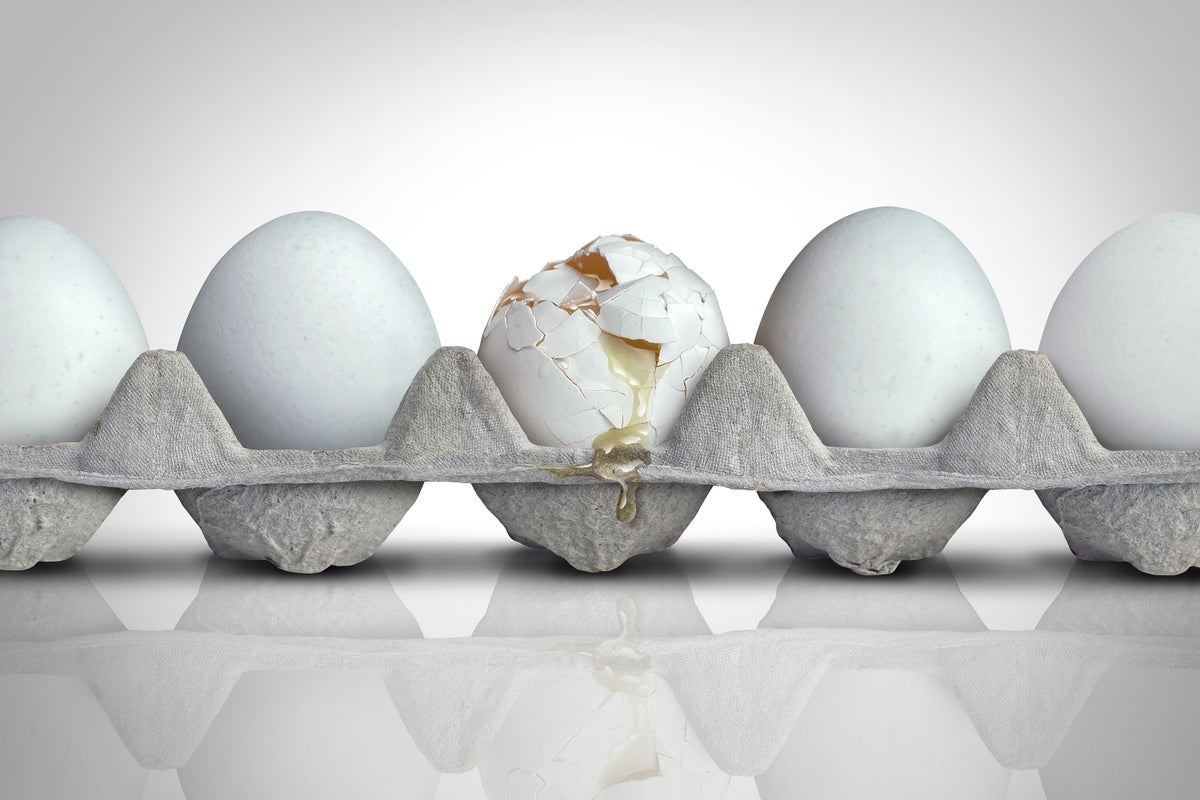Science-Backed Ways to Stay Healthy during Salmonella Outbreak in Eggs
To prevent Salmonella food poisoning, refrigerate your eggs, cook them well, never eat them raw and clean, clean, clean
Join Our Community of Science Lovers!
At least 79 people have been sickened by a Salmonella outbreak linked to organic and cage-free eggs, distributed under various brand names across nine U.S. states. The eggs were processed by the August Egg Company in Hilmar, Calif., according to the Food and Drug Administration. On June 6, after FDA tests discovered the bacterium, the company issued a wide recall.
The recall is just the latest in a string of callbacks linked to Salmonella contamination. On June 4 TGD Cuts of Jessup, Md., recalled cucumber and salsa products. And in late May the FDA urged consumers to follow a recall of tomatoes that were packaged and shipped by various companies.
What is Salmonella, how can it make you sick, and how can you minimize your chances of getting it? Here are some basics.
If you’re enjoying this article, consider supporting our award-winning journalism by subscribing. By purchasing a subscription you are helping to ensure the future of impactful stories about the discoveries and ideas shaping our world today.
Salmonella is a bacterium that thrives in the intestinal tracts of certain animals, including chickens and cows—and humans. It is shed through feces.
Like many foodborne pathogens, Salmonella is often spread by improper cleaning or handling of raw food—including meat, eggs, seafood, vegetables, fruits and rice—at farms or factories. It is often associated with chicken and eggs, although past outbreaks have also been linked to peanut butter, raw pork and beef, cucumbers and even raw flour in cookie dough. When compromised products are shipped, stores and consumers may be unaware of the contamination until enough people start to become sick and investigators trace the source back to specific food lots. The U.S. Centers for Disease Control and Prevention estimates that 48 million Americans get sick from food each year.
You may begin to feel sick anywhere from eight to 72 hours after you are exposed. As the bacteria multiply, they can cause stomach cramps, diarrhea, vomiting and fever. Children under age five often account for a large percentage of cases in a Salmonella outbreak, and older people or those with a weakened immune system are at greater risk. In rare cases, people develop joint pain or eye irritation.
Infections often clear within three or four days. But if you experience diarrhea that lasts for more than two days or your body temperature rises above 102 degrees Fahrenheit (39 degrees Celsius), health officials urge that you should see a doctor. Complications such as diarrhea can cause dehydration, so drink plenty of fluids.
Contaminated food is the chief source of infection, so never eat raw foods that can carry the bacterium. Refrigerate eggs or other susceptible foods at 40 degrees F (four degrees C) or less. When preparing meals, use separate cutting boards and knives for meats and vegetables and thoroughly wash cooking equipment—as well as kitchen surfaces and your hands after prep. Microwave dishwashing sponges on high. Cook ground meat and eggs to at least 160 degrees F (71 degrees C).
Birds, hedgehogs, turtles, guinea pigs and even pet bearded dragons can carry Salmonella and make you sick through direct contact, according to a 2024 Scientific American story. A trend among homeowners to raise chickens in the backyard, which expanded during the COVID pandemic, has also been a culprit in people becoming infected by the bacterium. Salmonella bacteria can linger on an animal’s skin, so regardless of how cute you think your chickens are, try not to snuggle or kiss them (which evidently is a thing)!
Mark Fischetti has been a senior editor at Scientific American for 17 years and has covered sustainability issues, including climate, weather, environment, energy, food, water, biodiversity, population, and more. He assigns and edits feature articles, commentaries and news by journalists and scientists and also writes in those formats. He edits History, the magazine’s department looking at science advances throughout time. He was founding managing editor of two spinoff magazines: Scientific American Mind and Scientific American Earth 3.0. His 2001 freelance article for the magazine, “Drowning New Orleans,” predicted the widespread disaster that a storm like Hurricane Katrina would impose on the city. His video What Happens to Your Body after You Die?, has more than 12 million views on YouTube. Fischetti has written freelance articles for the and many others. He co-authored the book Weaving the Web with Tim Berners-Lee, inventor of the World Wide Web, which tells the real story of how the Web was created. He also co-authored The New Killer Diseases with microbiologist Elinor Levy. Fischetti is a former managing editor of IEEE Spectrum Magazine and of Family Business Magazine. He has a physics degree and has twice served as the Attaway Fellow in Civic Culture at Centenary College of Louisiana, which awarded him an honorary doctorate. In 2021 he received the American Geophysical Union’s Robert C. Cowen Award for Sustained Achievement in Science Journalism, which celebrates a career of outstanding reporting on the Earth and space sciences. He has appeared on NBC’s Meet the Press, CNN, the History Channel, NPR News and many news radio stations. Follow Fischetti on X (formerly Twitter) @markfischetti
Source: www.scientificamerican.com
